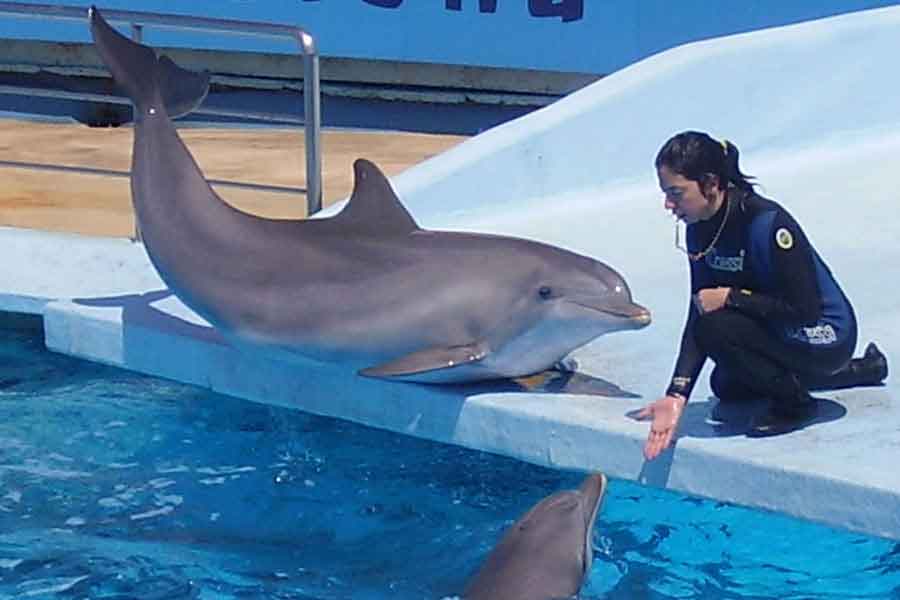
Tired of cleaning up the dolphin pool every day, the trainer at a well-known aquarium in the United States decided to train the dolphins to pick up the trash that flew into the pool after the show. He started rewarding them with extra food every time they brought him a plastic cup or a piece of paper that had fallen into the water.
On one occasion, Daisy, an adult female, found a piece of paper, took it to the bottom of the aquarium, and placed a small stone on top of it to prevent it from floating. Every day, she would cut several small pieces of paper and bring them to the trainer, receiving food each time.
Recently, at an aquarium in Hawaii, the trainers were intrigued to see that when they asked a dolphin a question that could be answered with a yes or no, for example, «Is there a ball floating somewhere in the pool?», the dolphins would answer without looking around. One day, one of the trainers was wearing sunglasses, and they discovered that when he was the one asking the question, the dolphins needed to search for the ball in order to answer. Further analysis showed that what they suspected that day was true: the dolphins could «read» the answer in the trainers’ eyes.
The captive dolphins learned to train the humans who confined them to keep them fed, throw them balls to play with, celebrate their acrobatics, and be kind to them. They obtained everything that can be obtained while in prison.
These fascinating mammals were already intelligent beings millions of years before the first primates descended from trees and began to walk upright. It is logical to assume that millions of years of intelligent evolution have produced results that we still cannot comprehend, perhaps not even imagine. Every day, new things are discovered that dolphins can do, or have been doing unnoticed for a long time.
All divers agree that when they dive with dolphins, they feel as if they are being observed. While divers can simply see them, dolphins are performing something similar to a computed tomography scan on us. They can perceive the density of each of our tissues. With their sophisticated echolocation system, they could perfectly detect muscle contractions or tumors and differentiate one from the other. Now we know that they can also read our gaze. How many more things do we not know?
We love dolphins so much that we confine them to pools and teach them to be like us, making them play football, imitate us, or dance to our songs. We love them so much that we pay expensive tickets so that our children can see them up close without having to go to the sea. We deceive ourselves into thinking that this is how we are educating them. We believe that it is essential for them to see a dolphin to understand what they are. At the same time, we ignore how much our children know about dinosaurs without ever having seen one face to face.
Perhaps dolphins are intelligent enough to understand that we are merely primates who recently descended from trees. Perhaps they are intelligent enough to forgive us one day.
«One cannot defend what one does not love, and one cannot love what one does not know.»

